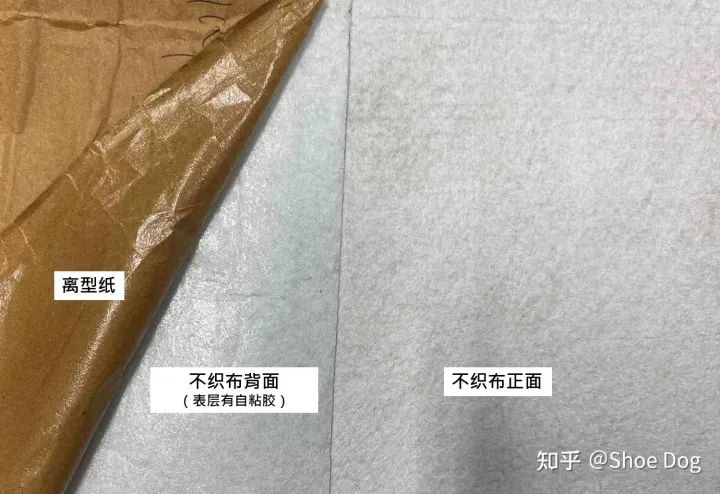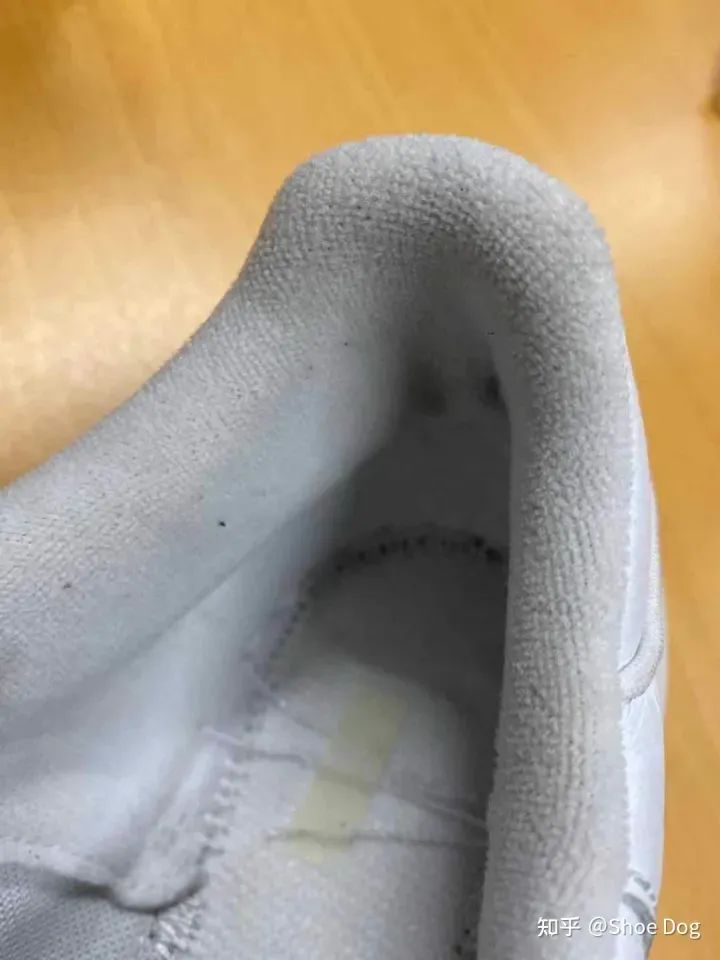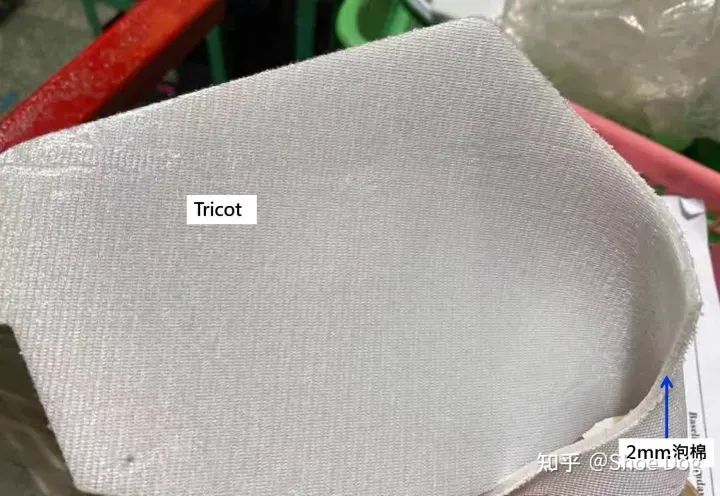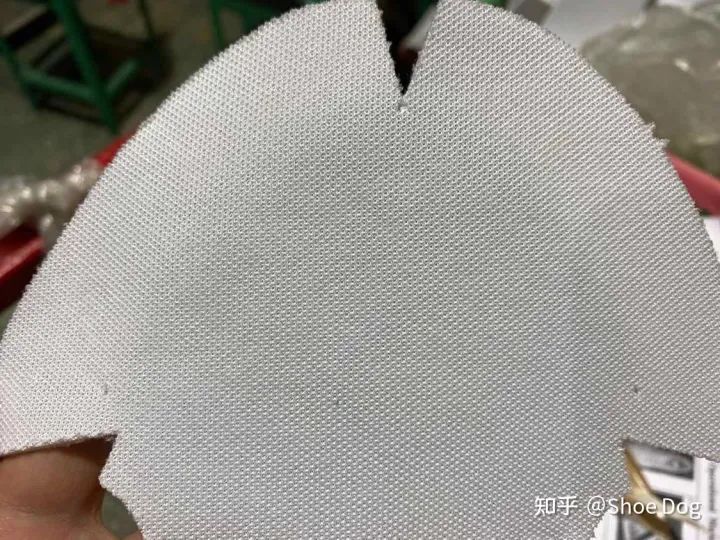As mentioned earlier, reinforcement materials usually need to be adhered to the shoe upper material, so self-adhesive will be set. During use, remove the release paper and stick it directly onto the surface material. Non woven fabrics can be made in different thicknesses, feel, and hardness according to needs. The commonly used thicknesses in shoe factories include 0.6mm, 0.8mm, 1.0mm, etc. Can be used for shoe body reinforcement, toe reinforcement, rear upper reinforcement, etc. It has a good supporting effect on the three-dimensional sense.

7. Super Light
A type of non-woven fabric commonly used for shoe eye reinforcement, which can help maintain a straight shape of the shoe eye piece and enhance the tension of the shoe eye hole (ensuring that the shoe eye hole will not be torn by the shoelace when forcefully wearing it). Usually, self-adhesive is also set. During use, remove the release paper and stick it directly onto the surface material.

8. DTE
A type of non-woven fabric with a certain hardness, usually used as a midsole fabric.

9. Visa Pile
Belonging to a type of knitted goods, it is soft and comfortable. Mainly used for insoles, reverse lining, tongue lining, etc.

10. Tricot
Tricot is a very light and thin knitted fabric, although it has poor strength, it is cheap and mainly used as an inner lining after being bonded with foam. Foam itself is not wear-resistant and tear resistant, and cannot be used alone in exposed areas. It can only be padded inside to increase comfort. In this way, Tricot and foam become a perfect combination and are widely used in shoes.

11. TL8 BV
A lightweight woven fabric typically used in exposed areas of the waist after being bonded with foam. Due to the relatively smooth surface of the material, it is prone to slipping feet and is not suitable for making reverse lining materials.
